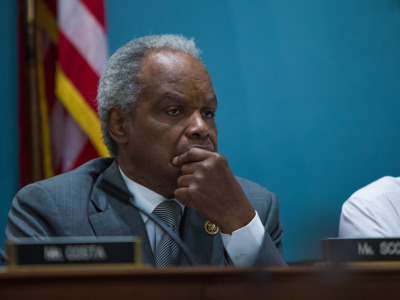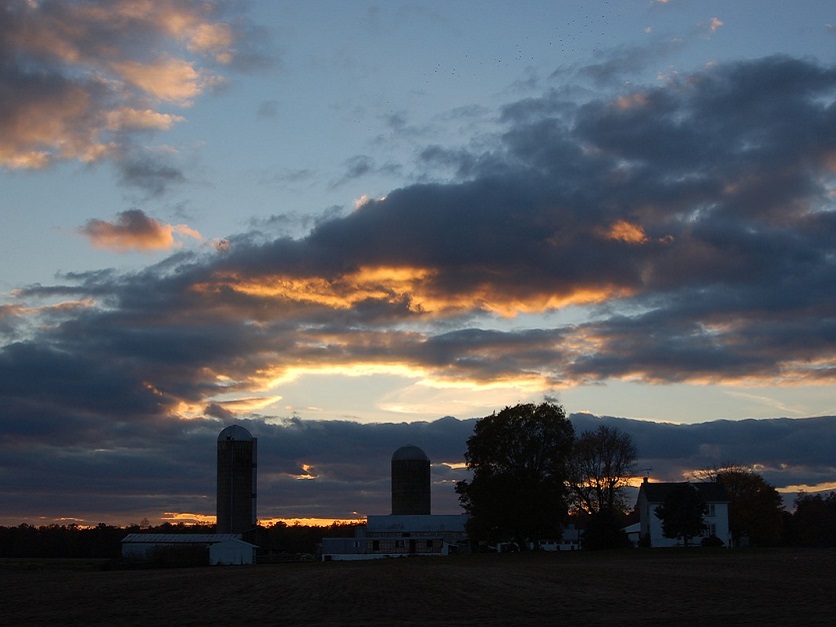Advocates for minority farmers say historical discrimination justifies providing payments totaling 120% of debt held by “socially disadvantaged” farmers, as approved by the House Agriculture Committee in its $16.1 billion COVID package, part of a larger $1.9 trillion stimulus bill to be considered by the full House of Representatives.
“Statutorily, I think we’re on sound ground,” said Quinton Robinson, a policy adviser for the Rural Coalition and an attorney in northern Virginia who has represented farmers in discrimination cases. “It just becomes an issue of how does the Secretary [of Agriculture] do this politically.”
“Congress will leave this broad enough to give the secretary flexibility to establish a program of debt relief for minority farmers,” he said. The Congressional Budget Office estimates the cost of the provision at $4 billion. The extra 20% is to pay taxes on the debt relief, which counts as income.
The National Council of Farmer Cooperatives on Wednesday issued a statement on the stimulus bill that praised the legislation for addressing "the need for equity and inclusion" in the ag sector.
The bill "contains important provisions, including debt relief and other assistance and support, for socially disadvantaged farmers and ranchers. These provisions will better ensure that all producers can come out of the pandemic ready to feed, clothe and fuel their fellow Americans and billions of people across the globe," NCFC said.
The Organic Trade Association also expressed support for the debt relief: "The organic movement is making a conscious effort to ensure that our successes in growing the market do not unintentionally perpetuate social inequalities, and it is ready to help advance this important legislation.”
USDA said in a statement the debt relief provision recognizes "that systemic discrimination and prejudice toward Black, Indigenous, and Hispanic farmers and other agricultural producers of color continues to exist and continues to contribute to a cycle of debt, which is even more difficult to overcome due to COVID. "
The legislation uses a definition based in the 1990 farm bill that says socially disadvantaged farmers "have been subjected to racial or ethnic prejudice because of their identity as members of a group without regard to their individual qualities." "Programs to serve socially disadvantaged farmers and their unique needs are not new," the department said.
Tom Vilsack, the recently-confirmed ag secretary, has repeatedly pledged to tackle historic discrimination at USDA. Critics say he did too little to address the issue when he held the position during the Obama administration.
The debt relief provision cleared the House Ag Committee on a party-line, 25-23 vote with Democrats in the majority. Committee Chairman David Scott, D-Ga., said he was “pleased to be a part of this effort to put our Black farmers in a better position after suffering the impacts of this pandemic and the inability to receive equal access to USDA programs over decades.”
The language in the bill would provide relief to Blacks, Hispanics, Native Americans and Asian Americans, a committee staffer said.

House Ag Committee Chair David Scott, D-Ga.
Republicans objected, with Rep. Austin Scott, R-Ga., arguing that legal settlements in two cases known as Pigford providing $2.25 billion to Black farmers should have been sufficient, and questioned the constitutionality of the measure. His office did not immediately respond to a request for comment on the basis of that opinion.
However, House Ag Republicans filed dissenting views on the stimulus package that said the committee should have a hearing on the minority farmer debt challenges before enacting debt relief provisions. The Republicans noted that Democrats had trouble answering questions about the provision as it was being debated in committee.
"The Minority believes that issues of social justice and addressing historical racial inequities in USDA programs is a worthy and important endeavor for the Committee. These issues certainly deserve thorough review, thoughtful analysis, and a deliberative process to determine the best policy solutions to address the problems faced by socially disadvantaged farmers," the committee Republicans wrote.
Another discrimination case involving Native American farmers, Keepseagle v. Vilsack, resulted in creation of a $680 million compensation fund with an additional $80 million in debt relief, according to the Native American Agriculture Fund, which was created as a trust as part of the 2010 settlement. USDA and the Justice Department in 2011 also established a voluntary process to settle the claims of Hispanic and female farmers, with $1.33 billion made available to eligible farmers with discrimination claims. Rudy Arredondo, head of the National Latino Farmers and Ranchers Trade Association, said about $207 million was paid out under that process.
Robinson said Congress has already enacted legislation providing for debt relief, back in 1987. The 1987 law, enacted amid a nationwide farm crisis, required USDA to write down severely delinquent loans if the cost of restructuring was less than the cost of foreclosing.
“There was no constitutional problem then,” he said. “So currently, if Congress says, for the purposes of maintaining our farm operations, including Black farm operations and minority farmers generally, we're going to relieve debt within the confines of the farm loan programs, Congress has the authority to do that.”
Regarding the current measure, Robinson said, “In this case, Congress has said there's a history of discrimination against this class of farmers, and that gives [them] a right to write this statute targeted to minority farmers, because of a history of invidious discrimination, discrimination that we can point to, that we can touch, that we can feel over a long period of time.”
Robinson points to provisions already in the law giving USDA broad authority to grant debt relief, including 7 U.S.C. 2008(a), which allows the secretary to provide equitable farm loan debt relief, and 7 CFR 766, which address loan servicing.
The plan to provide 120% debt relief arose from discussions with the Biden transition team.
John Boyd, head of the National Black Farmers Association, said the debt relief is needed because some Black farmers were left out of the Pigford settlements. A court monitor’s final report on implementation of the consent decree in Pigford called the case “a good first step, and more, towards accomplishing the goals that were at the heart of the settlement.”

John Boyd, NBFA
"USDA has to change the way it does business with Blacks and other ethnic groups, how they roll out their relief packages to everybody," Boyd said. "There's just not enough outreach and communication to the Black farmers."
In 1920, Black farmers made up 14% of all farmers in the U.S. Now, Scott said, it’s 1%.
Mai Nguyen, founder of the Asian American Farmers Alliance, said, "We endorsed the effort through our membership at Rural Coalition, and deeply appreciate the continued Black-led work that lifts us all."
She said the "linguistically and geographically diverse" farmers she represents have not "had much successful federal engagement" and during the COVID-19 pandemic, "We at AAFA knew that any government effort would be slow and conduct insufficient outreach, so we focused on creating direct relief by fundraising through philanthropic entities for both relief funds ($835,000) and compensating culturally competent community members to contact, interpret, and translate our application process ($50,000) for California [Black, Indigenous and People of Color] farmers and land stewards. Eighty independent entities received between $5,000-$20,000, which is more than what they'd be eligible for through existing [USDA] programs."
Interested in more coverage and insights? Receive a free month of Agri-Pulse West.
Arredondo said he doesn't know how much relief Latino farmers would be eligible for. "It could be some relief for some," he said. "My concern is how are we going to be able to sustain our farmers. The debt thing is something useful, but that’s not the end-all to the situation we’re in."
Former Ag Secretary Dan Glickman, who dealt with the original Pigford case, said he had not looked at the measure, “so I really can't comment on it intelligently.” Nevertheless, he said the relief provided through the Pigford settlements “was probably, when you look back, historically incomplete. There's no question that the goal of increasing the number of minority farmers is an important goal to achieve.”
“Aspirationally, it sounds like a very good thing,” he said.
Another long-standing issue that has faced Black farmers is an issue known as “heir’s property.” That is where Blacks farm family-owned land that is part of an estate that didn’t clear probate. The descendants lack a clear, marketable title on the land, which also kept some Black farmers from participating in USDA programs.
The 2018 farm bill included a provision to make it easier for the heir’s property farmer to qualify for USDA assistance by authorizing alternative documentation for obtaining a USDA farm number.
For more news, go to www.Agri-Pulse.com.


